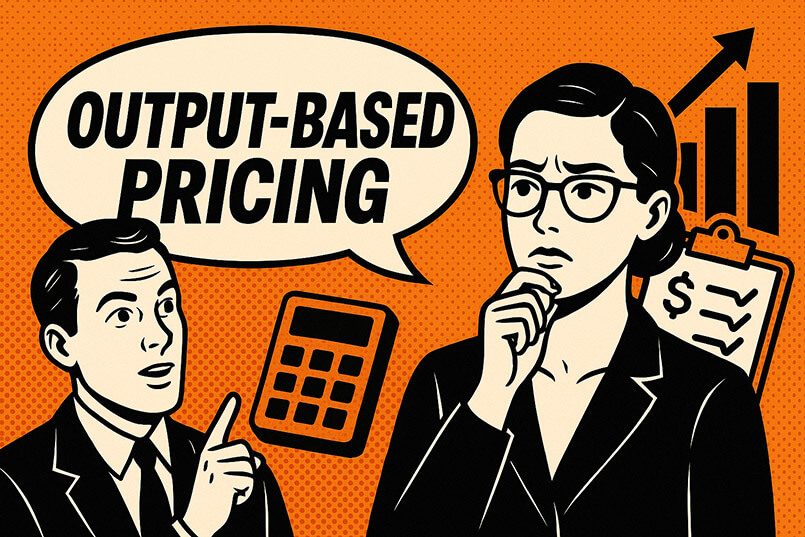While many people in the industry talk about partnering with their agency or with their client, the majority of agency fee models do not support this position.
Many advertisers and their procurement executives view these relationships as buyer/supplier, while the agencies often approach them as partnerships.
But what is the difference?
Which of these is correct?
And what impact does this have on the agency fee?
definition: supplier / n. one who furnishes with what is lacking or required to satisfy a need or demand
This broad description captures the relationship between advertisers and their agencies, where the client requires the provision of creative communication ideas developed for their specific needs and then executed to an agreed plan. Just because this service is customised to the needs of the client does not make the agency a partner.
definition: partner / n. : Law. one associated with another or others as principal or contributor in a business, usu. sharing its risks and profits.
The critical point here is they share the risks and the profits. Let’s look at some typical agency fee models in the market and determine if they reflect a supplier relationship or partnership.
Media Commissions & Service Fees
Some clients still use this buyer/seller mode of the agency fee, with the client buying the media/services and the agency supplying these. The fee is paid based on the volume bought, not the quality of work or outcome.
This is considered a cost-in model where the fee is directly related to the amount spent.
This is either used exclusively or as part of a hybrid model of agency fees.
The risk for the agency is that its revenue increases and decreases with the client spending and not directly based on the quality of the agency services provided.
Retainer and/or Project Fee
These are a derivation of the head hour model, in which the required resource is calculated or estimated, and the total fee is paid for each service or project.
Rather than based on expenditure, the focus has moved to the client buying human resources and paying the associated costs.
Advantage:
1. The buyer knows the cost upfront and can budget
2. Guarantees the cash flow for the supplier against a set human resource.
3. Buyers can decide whether these services are cost-effective and essential.
Weakness:
1. No recognition of the value created in the form of intellectual property or revenue or profit generated by the supplier
2. Difficulties defining the service levels and quality of the personnel required to provide those service levels.
3. Irrespective of doing an outstanding or hopeless job, profitability remains the same.
This is also considered a cost-in model, where the fee is directly related to the cost of the time spent.
This is used exclusively or as part of a hybrid agency fee model and has become the most common model in the market.
The most significant risk facing agencies is that as AI automates more of the advertising process, billable hours will be reduced against two decades of stagnant hourly rates.
Value Pricing Fee
Value-based fee models move from the resource model to the pricing and ROI model, setting a price on the delivery of outputs and an ROI bonus on the outcomes of those outputs.
Rather than based on the level and cost of resources, the focus has moved to the value of the agency outputs to the client and the ROI of those outputs.
Advantage:
1. The price is set up front for both the buyer and supplier
2. The expenditure with the agency moves from a cost to an investment
3. The agency can share in increased returns where the outputs they produce contribute to larger revenue or profitability
Weakness:
1. Setting the required output and placing a price or value on that output can be challenging
2. Agencies can be unwilling to have their fees linked to measures they believe they have little or no influence over
3. Marketers are unable to budget the bonus or variable component of the agency fee based on results
This is considered a value model, where the fee is directly related to the value apportioned to the output or the deliverable.
This is increasingly popular as it provides certainty for both client and agency and can apportion fee to the value of the work.
Performance Based Remuneration (PBR)
PBR is a relatively common way of providing an incentive for the agency, usually by sacrificing the profit margin.
The most successful models use soft, medium and hard measures.
1. Soft measures: relationship objectives measured by systems such as Evalu8ing.com
2. Medium measures: marketing measures, e.g. brand awareness, desirability or propensity to purchase.
3. Hard measures: business measures, e.g. sales increase, market share, market penetration or even share price.
Difficulties:
1. Achieving agreement on the measures, especially the hard measures such as sales.
2. Difficulty managing the PBR as a floating component within their budget, with a “use it or lose it” accounting practice.
3. PBR measures that are complex, difficult, time-consuming and costly to administer and implement.
Partnership Behaviour
So, what constitutes a partnership from a fee perspective? Where the agency shares in the risks and rewards.
1. 100% of the agency profit at risk based on PBR.
2. Linking all agency profit to the sales success or profitability of the client.
3. Investing time and resources with a significant profit or revenue share.
4. Joint venture with agency as the outsourced marketing/advertising department.
Without this approach, the relationship is not a partnership but one of vendor or supplier of services.
Matching fees to requirements
Not every client wants a partner.
Not every client wants a supplier.
The basis of any agency fee model should compensate a supplier for their costs with a reasonable profit or reward the partner for the value they create for and in the business.
Advertisers and their agencies need to understand the type of relationship they want and develop agency fee models that reflect and sustain that relationship, not just pay lip service to it.
We have years of experience developing customized agency fee models based on industry benchmarks and best practices.
However, in most cases, the primary driver for the marketer and procurement is trying to deliver transparency and accountability to reduce costs, but it is not necessarily building sustainable relationships.
In other words, they see their agencies as suppliers.
What relationship do you have with your agencies?
Read more about how we can assist in developing agency commercial fee models for all types of agencies, both outsourced and in-house.




